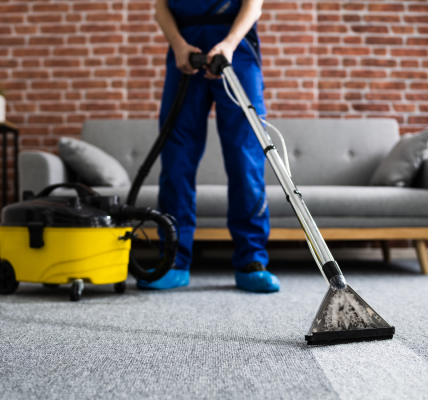Without even holding a hearing, the House Judiciary Committee just passed a new bill (H.R. 985) that would make it far harder to sue large corporations when they cheat or hurt people. The vote was on party lines, with all Republicans voting for it and all Democrats voting against. The bill now goes to the full House — but there’s still time to make sure your Representatives know how you feel about it. Call your Representative and tell them to put their constituents ahead of the U.S. Chamber of Commerce, the top-spending lobbyist in the country.
Have you ever been cheated by a bank on an overdraft fee? So have millions of Americans, and the only way they ever get that money back is through a fraud and restitution class action. From stock losses to pension mismanagement to consumer scams to unpaid wages, for most of the frauds in America, the only way to get a dime back is through a class action.
Do you live on the Gulf Coast? That’s where I grew up, and I know that the only way those communities recovered anything from BP for the Deepwater Horizon oil spill was through multi-district litigation (“MDL”). From Vioxx pills causing heart attacks to DePuy hips causing metal poisoning to Volkswagen lying about emissions tests to the NFL hiding brain injuries, the MDL process is the only way to hold accountable reckless corporations when they hurt hundreds or thousands of people.
The so-called Fairness in Class Action Litigation Act of 2017 (H.R. 985) would wipe away decades of federal court precedent and would override the laws of all 50 states in an effort to ruin class actions and MDLs. The American Bar Association has opposed it for a variety of reasons, including how it “would circumvent the time-proven process for amending the Federal Rules of Civil Procedure established by Congress in the Rules Enabling Act” and how its requirements would have precluded veterans from suing the Veterans Administration over delayed claims. Seventy consumer, labor and environmental groups have opposed it. Thirty-eight groups that represent individuals with disabilities have opposed it. One-hundred twenty civil rights groups have opposed it. Law professors Myriam Gilles and Elizabeth Burch have explained why it’s a jumbled mess that will confuse courts and delay cases.
So why didn’t the House Judiciary Committee hold a hearing?
Because the point of the bill isn’t to ensure “fairness in class action litigation.” It’s precisely the opposite: the bill is designed to make it far harder for consumers, patients, and victims of fraud and discrimination to get their day in court. House Judiciary Committee Chairman Bob Goodlatte claimed after the passage, “Today’s action addresses the abuses within our class action litigation system, and keeps baseless class action suits away from innocent parties, while still keeping the doors to justice open for parties with real and legitimate claims.” This is an outright lie: the very purpose of the bill is to close the doors to justice for people with real and legitimate claims. If Rep. Goodlatte really cared about “keeping the doors to justice open,” he wouldn’t have had to ram HB 985 through committee with minimal notice to the public and without a hearing.
It seems pointless to discuss the bill’s provisions in detail when the lawmakers who support the bill have cowardly refused to defend it in public, but I’ll summarize it nonetheless.
Section 3 – Class Action Procedures
Sections 1716 and 1720 tells the federal courts to throw away decades of precedent on class action certification and to instead follow a brand-new set of criteria, like not certifying a class unless “each proposed class member suffered the same type and scope of injury,” and requiring a “rigorous analysis,” whatever that means. As Professors Gilles and Burch pointed out, the bill’s language is ambiguous in several points, but presumably the Chamber of Commerce thinks it will be interpreted as precluding class actions except where everyone has suffered literally “the same” injury. If a bank cheated millions of people with overdraft fees, but they were charged different amounts on the whole, then the class couldn’t be certified. If the class wasn’t certified, then the cases would be worthless, because no single case is worth the cost of pursuing it.
It’s already extremely difficult to get a class action certified after the Supreme Court’s opinions in Dukes v. Wal-Mart and Behrend v. Comcast, but those locks on the courthouse doors aren’t enough for the U.S. Chamber of Commerce and the dishonest corporations it represents — they don’t want to just get away with most frauds they inflict upon the American people, they want to get away with all of them.
Section 1717 then adds a huge set of restrictions on clients, including a prohibition on class representatives being “a present or former client of” the class counsel. Most consumers won’t be in multiple class actions, but the same isn’t true of investors and pension plans, which are often involved in multiple securities lawsuits when they are defrauded by the corporations they invest in. This section is good news for big companies that lie in their investor disclosure statements, but bad news for anyone who owns stock, has a 401(k), or has a pension.
Sections 1718 and 1719 make it virtually impossible for plaintiffs in class actions to get paid by jamming up settlements until the federal court has spent weeks or months reviewing proposed payment administration plans. Once the federal court approves the plan, the court is stuck performing an audit on every payment in the distribution before it can even begin the lengthy process of closing the case. (If you’re thinking it’s a good idea for courts to oversee class action settlements, you’re correct, and the courts already do that, like a court is doing now in a class action against Remington over defective rifles. HR 985 just adds more administrative duties to the federal courts as a means of slowing down payments to plaintiffs and as a way of generally jamming up the federal courts, which hurts everyday plaintiffs more than billion-dollar corporations.)
Section 1721 stays all discovery until after the court has decided a litany of motions, thereby slowing down the litigation as a whole and further jamming up federal court dockets. Section 1722 creates a one-way rule where plaintiffs and their firms have to disclose any funding they have, but defendants don’t. Section 1723 jams up the federal courts even more by forcing federal appellate courts to accept appeals of class certifications in the middle of cases.
Section 4 – Misjoinder of Plaintiffs in Personal Injury and Wrongful Death Actions
This section creates a big mess of work for courts across the country by re-writing centuries-old law about the ability of plaintiffs to file lawsuits together over the same issue, like if two people were both injured by the same medication or medical device. The net effect will be to split lawsuits all across the country, with state courts losing control of consolidated dockets and federal courts being swamped with more cases.
Section 5 – Multidistrict Litigation Proceedings Procedures
Section (i) tells federal judges how to manage their own dockets, forcing them to be overwhelmed with medical records and affidavits in the first 45 days after a case is filed. If this procedure was in place for the transvaginal mesh litigation, for example, then the litigation would have gone absolutely nowhere (instead of producing multiple settlements, jury verdicts, and appellate court opinions), because the federal court would still be wading through over 50,000 packets of medical records and affidavits, instead of deciding for itself the scheduling of discovery and fact sheets.
Section (j) dumps more work on federal district courts across the country by precluding MDL courts from hearing trials in the cases they were assigned unless all parties agree. Again, if we take the example of transvaginal mesh (or perhaps asbestos), then this would have destroyed the workings of the federal courts across the country by swamping them all with trials of cases they know nothing about.
Section (k) slows down MDLs and swamps the appellate courts by re-writing the rules for when an appeal must be accepted by an appellate court.
Section (l) overrides the legislatures and supreme courts of all fifty states by requiring that claimants “shall receive not less than 80 percent of any monetary recovery obtained in that action by settlement, judgment or otherwise.” The obvious point of this bill is to make MDL cases impossible to pursue, because the costs on them are usually so high that a 33{c9b670b3c77d807bdd7060c9fc0a99121cc6b184676c9335f3481a95c383dd4c}-40{c9b670b3c77d807bdd7060c9fc0a99121cc6b184676c9335f3481a95c383dd4c} fee agreement is needed unless the client agrees to pay expenses, which of course most of them can’t do: few of them are wealthy and all of them have been hurt, often hurt so badly they can no longer work.
Moreover, State legislatures and Supreme Courts already regulate fee agreements and have never asked the federal government to take over this issue.
Finally, adding the “80 percent” requirement creates a host of issues that indicate whoever wrote HR 985 has never been involved in this type of litigation: for example, does that mean that Medicare/Medicaid can no longer recover a medical lien from the plaintiff if that would bring them below 80{c9b670b3c77d807bdd7060c9fc0a99121cc6b184676c9335f3481a95c383dd4c}? Every year, the taxpayers recover millions of dollars in Medicare/Medicare spending thanks to injury lawsuits, including MDL lawsuits, and this bill would dramatically reduce that, both by thwarting most MDL claims and through the “80 percent” requirement. (You won’t be surprised to learn that the lawmakers behind HR 985 did not request the Congressional Budget Office do an analysis of the bill’s costs to the government.)
Section 6 – Rulemaking Authority of Supreme Court and Judicial Conference
This section ironically claims, “Nothing in this Act shall restrict in any way the authority of the Judicial Conference and the Supreme Court to propose and prescribe general rules of practice and procedure under chapter 131 of title 28, United States Code.” But that’s exactly what HR 985 does: it rewrites Rule 23 of the Federal Rules of Civil Procedure in a way that the Judicial Conference and the Supreme Court have chosen not to do.







